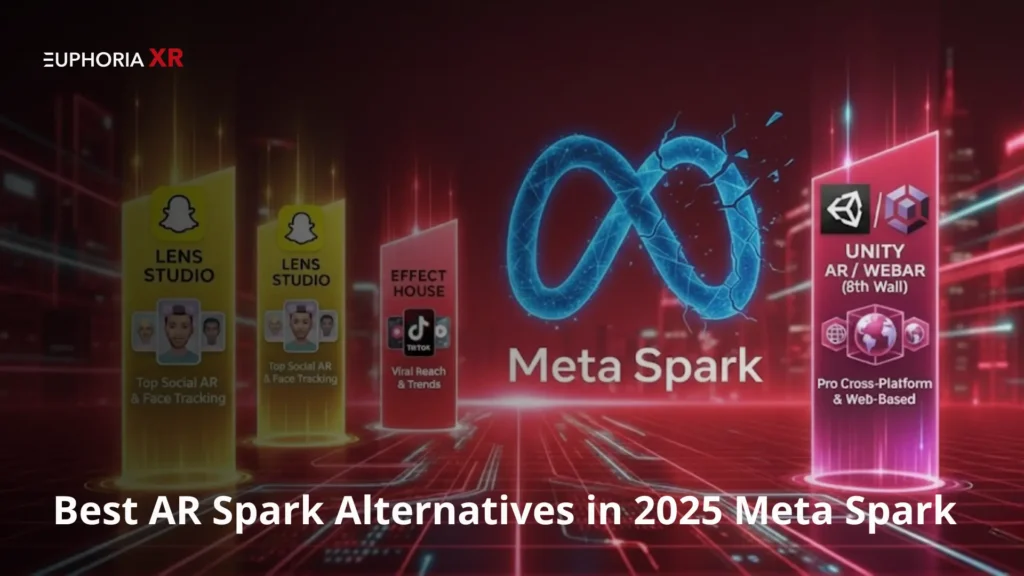Still Printing the Old Way? Try Augmented Reality in Print Media Instead
Are you still using static posters, flat brochures, or forgotten business cards? Your audience wants more. The majority of printed advertisements and pamphlets are thrown away in a matter of seconds, let us face it. But what if your catalog could speak? What if there was a video on your business card to promote you? Augmented reality in print media is becoming a reality, not a sci-fi idea. Welcome to the next era of print that speaks, moves, and interacts instead of just sitting there. Wondering how it operates? Let us dissect how it works.
What is Augmented Reality in Print Media?
Augmented Reality (AR) in print media merges digital content with physical printed matter such as magazines, brochures, posters, packaging, and business cards. People who use smartphones and tablets to scan printed surfaces will experience interactive digital elements that lie on top of their actual sight.
Imagine scanning a magazine ad and seeing a product come to life in three dimensions, rotating, or even virtually trying it on, rather than just reading about it. Or picture being able to view a video of the location directly on the page of a vacation brochure as you flip through it.
In simple terms, AR adds a digital overlay to paper, making static print interactive, engaging, and memorable.
It turns passive readers into active participants, transforming standard print into an experience.
Why Use Augmented Reality for Print Media?
Let us face it, traditional print media has limitations despite its force. It can attract attention, but not always maintain it. This is where print media’s use of augmented reality changes the rules.
Multiple entities including educational facilities along with brands and publishers, join forces to integrate AR into printed materials because of these key reasons.
AR turns passive reading into active exploring. Users can engage with interactive content through taps as well as through watching the content and they can produce memory retention.
Print materials such as flyers and business cards immediately provide users with online access when they connect to websites videos or online purchasing destinations.
AR-enhanced print advertising emerges as the winner when left to compete against ordinary promotional materials regardless of their number.
Using AR tools enables users to monitor results through immediate data reports about user scan activities and duration of interaction along with click activities.
Limited space on a page? No problem. The technology of AR enables users to embed videos and demos together with animations and many other content types.
Using augmented reality in print media creates elements that become more engaging and easier to recall as well as generate performance metrics.
A Short History Of Virtual Reality and Augmented Reality in Print Media
The development of augmented reality has been restructuring print media throughout the last ten years. Certain significant moments drove the development of augmented reality print media by demonstrating its potential.
#1: Google Sodar
Google Sodar introduced WebAR back when the pandemic began to aid users in visualizing social distancing requirements without demanding installation of the application. AR accessibility in print became clear through the demonstration of how a browser and phone allow easy access to such content.
#2: AR As A Marketing Opportunity
Manufacturers implemented AR codes on product packaging together with advertising materials to enable customers a smooth transition from offline to online experiences which led to video demonstrations and product information access.
#3: Wikitude
Organized in 2009, Wikitude became one of the initial AR browsers that enabled printed materials to launch localized content, display interactive 3D elements, and generate responsive user experiences. The technology converted traditional print publications into intelligent interactive content.
#4: Travel
The tourism industry started applying AR technology to its brochures through virtual tours and 360-degree views as well as instant booking capabilities.
#5: Christoph Niemann’s 2016 New Yorker Innovators Issue Cover
The famous printed version introduced an animated cover that delivered its animation through AR technology. This development officially advanced the potential of editorial design and storytelling improvements by combining printed pages with technology capabilities.
Do you want to create a memorable brand?
Ordinary becomes extraordinary with Euphoria XR’s AR solutions.
Use Cases of Augmented Reality in Print Media
Augmented reality in print media is changing how people interact with physical content. Media components become substantially more appealing through augmented reality because it enable the insertion of digital features that span from videos to interactive models to clickable elements. Four effective application scenarios exist alongside real-life demonstrations.
AR Books and Educational Materials
Learning becomes more vibrant through AR because digital tools convert textbook information into dynamic interactive graphics. Students may activate their cameras to see three-dimensional cardiac visualization and step-by-step mathematical problem resolution alongside volcanic eruptions. Educational AR enhances learning comprehension while maintaining student focus and serves students of various learning profiles, especially visual-aural learners.
Example: Students can now analyze human body components through “Human Anatomy Atlas” by Visible Body which utilizes AR technology to virtually display essential organs from textbooks directly on their mobile devices.
Interactive AR Cards and Invitations
AR technology transforms greeting cards and invitations into touchpoint experiences. The recipient activates interactive content by scanning the card which plays videos, displays animations, or can start playing songs. Such emotional depth makes memorable wedding celebrations as well as birthdays and holidays through these cards.
Example: Hallmark provides Video Greeting Cards through which customers upload their video content that gets linked to specific QR codes found on the cards. The video reveals itself when recipients use their phones to scan the card which results in a warm addition to their standard greeting card experience.
AR Gifts and Custom Packaging
Modern packaging functions as a new method of communication independent from being a physical container. Through AR brands apply packaging to deliver tutorials, messages, and interactive elements that establish stronger brand relationships together with customer educational content. Traditionally used in gift exchanges because emotional communications and digital surprises can be integrated into the packaging.
Example: The Holiday Campaign by Coca-Cola integrated AR into its cans so users who scanned the packaging received animated holiday content directly on their mobile device which combined packaging with the celebration experience.
Augmented Posters and Event Banners
Through AR technology posters and banners receive interactive characteristics which allow real-time engagement between users. A scan through the phone camera triggers music videos and event information views while directing users to payment pages. Both factors work together to enhance audience participation while improving the impact of stationary promotional materials particularly when used for public outreach initiatives.
Example: Marvel’s “Avengers: Endgame” posters in a few places let fans use their smartphones to scan the poster and view countdowns to the movie’s premiere, character animations, and behind-the-scenes videos.
These actual cases demonstrate that augmented reality in print media is more than simply a new technology; it is a potent tool for audience engagement, education, and impression. AR makes your printed products memorable, whether you are using them for promotion, education, or just to convey a message.
Six Ways Augmented Reality is Transforming Print Media
Traditional print media formats are being revitalized by augmented reality, which makes them immersive, engaging, and memorable. AR is changing the print experience in six significant ways, from product catalogs to instructional books:
Enhancing Product Catalogs and Brochures
Current customer literature that displays products performs well but customers desire actual life views of products through all their perspectives.
Virtual try-on features
Users can try virtual versions of glasses and jewelry together with makeup products and clothing through printed image scanning. Product testing through virtual try-on features creates more self-assured consumers who return items less frequently.
Suggested Read: https://euphoriaxr.com/augmented-reality-mirror-technology/
Embedded product demos
Girls Friday enables brands to add product demonstration videos and both 360-degree and actual product showcases which activate upon page scanning thus delivering authentic product experiences before purchases.
Example: Users of L’Oréal’s AR brochures can test lipstick colors through paper visual scans which then show the product’s effect on their lips in real time.
Interactive Magazine Ads and Articles
Magazines continue to develop through interactive functions that replace existing images and text. These portals provide users with digital experiences because of AR technology.
Shoppable pages
The reader can view products immediately for purchase by scanning images from print media giving up the need to explore manually online. Such streamlining of the purchase process boosts conversion rates effectively.
3D product visuals
The incorporation of AR in advertising brings interactive 3D product models that enable page readers to apply 3D movement features for product exploration and zoom functions to make the advertisement more interesting.
Example: The beauty spread in Cosmopolitan offered readers the opportunity to scan the ad which then provided a live tutorial and a direct purchase link for the showcased products.
Revamping Business Cards with AR
Although business cards serve as crucial tools, many people fail to keep them while also forgetting about them. With AR content readers can dismiss it.
Click-to-Call
The direct call button appears when users scan the card while performing a single step to establish contact. Quick, easy, and efficient.
Video Intros
Quick scanning of this short video format helps users both meet the person or view their brand narrative which creates an unforgettable initial connection.
LinkedIn pop-ups
Augmented Reality cards automatically connect users to LinkedIn profiles, portfolios calendars, and websites because of their enhanced networking features.
Example: BlippAR-powered cards enable business professionals to make interactive dimensional cards that integrate clickable content with portfolio displays and booking systems through one platform.
Augmented Book Covers and Pages
Book content extends past the printed pages because of AR implementation.
Bonus Content
Users of print materials gain access to VIP content including behind-the-scenes extras, author Q&As, and hidden interviews by scanning book pages and their covers.
Author Notes
Reading a novel can become interactive because authors deliver explanations about chapter inspirations through audio commentary. AR adds layers to storytelling.
Animations
The animations caused by scanning child-friendly picture books bring both entertainment and interactive elements to young readers.
Example: The mobile application scanning function of Penguin Random House AR book covers revealed authentic video trailers along with author information and insights.
Immersive Packaging Experiences
The purpose of packaging extends beyond barriers against damage because it creates an opportunity to establish bonds. AR enables each package to serve as a performance area.
Unboxing experiences
Customers will have a premium unboxing experience when they activate the welcome video, product walkthrough, or surprise message with a simple package scan.
Gamified packaging
Consumers who scan labels can find interactive rewards together with games and quizzes provided by some brands which serve to enhance contests while building customer loyalty.
Example: Users who scan the Pepsi Max bottle’s label can play games on their mobile phones because of the AR technology embedded in the packaging.
Interactive Educational Materials
Students learn better when information solidifies with the use of AR technology specifically when the audience includes children and complicated topics.
Visual learning aids
Animation of 3D diagrams can be accessed by scanning textbook pages about planets in motion, hearts beating, or structures in construction.
Real-time translations and overlays
AR transforms printed content into valuable learning materials that display translated words combined with pronunciation guidelines and cultural background references suitable for educational purposes.
Example: Students who use Pearson AR Textbooks can access interactive lesson materials by scanning diagrams or definitions so they understand concepts better and retain them easily.
The six methods indicate augmented reality in print media functions to elevate print products instead of wiping them out. AR technology enables your company to convert simple text-based content into exciting interactive material that readers will remember vividly.
Engage your customers like never before- Work with a results-driven AR development company!
Interactive AR Applications Beyond Traditional Print
Although AR is recasting well-known formats like books and catalogs, its full potential is revealed when used outside of traditional print media. These inventive applications transform commonplace materials into captivating, interactive experiences that astonish and delight.
Interactive Brochures and Flyers
People discard brochures and flyers into trash bins until they provide interactive experiences. People can activate videos and product tours and access maps together with RSVP forms and live event timers by scanning standard flyers. Through AR applications brochures become more useful and captivating for product launch announcements, open house tours, and campus visits.
Example: Using AR technology, Toyota enabled their brochures to let readers see three-dimensional car models together with complete interior details and color-changing abilities that worked from basic printed pages.
AR Art Prints and Visual Storytelling
The creative practitioners of storytelling along with artists now utilize AR technology to activate their printed creative works. Artwork can be scanned to activate animated features, show creation steps, or interpret itself through time-dependent, emotional, or music-related criteria. Together print media and performance merge into an intense operational combination.
Example: Viewers can use the Artivive App to link animations with printed artwork so they can activate the stories by scanning the artwork and watching the animated content directly on the surface of the canvas or the print.
Posters and Banners with Motion Layers
Form and movement are two traits that can redefine the character of posters. Users who activate AR scanning on a poster can automatically view trailers and testimonials together with real-time content. Motion-layered posters serve both as effective attention-grabbers and powerful information communicators for the promotional needs of concerts and campaigns as well as movies.
Example: Netflix deployed AR technology through “Stranger Things” movie posters which enabled fans to activate animated scenes along with show secrets by scanning the prints.
The benefits of augmented reality in print media
The transition from static to smart print represents a strategic benefit rather than just a trend. Brands and schools are investing in augmented reality in print media for the following main reasons:
Reader Engagement and Interactivity
AR transforms readers become active contributors. Users tap, scan, investigate, and react rather than simply viewing a page. Longer attention spans and better message retention result from this.
Bridging the Gap Between Physical and Digital Content
AR bridges the gap between the online and offline worlds. It is now easy to extend the experience by using printed materials to send customers to websites, product pages, social media, or videos.
Providing Additional Content and Information
Too little room on a page? No issue. With AR, you can add more content—such as reviews, interviews, tutorials, or supplemental chapters—without overcrowding the layout.
Creating Innovative Marketing and Advertising Opportunities
AR in Marketing gives campaigns a wow element. Particularly on social media, it makes brands stand out, generates discussion, and provides unforgettable experiences that people want to share.
Tracking Engagement and Gathering User Data
AR tools, as opposed to traditional print, allow you to monitor user behavior, including the number of scans, duration of interaction, and clicks. This provides marketers with useful information for enhancing performance.
What’s next with augmented reality in print media?
Advanced AR with Haptic Feedback and Spatial Audio
Future augmented reality print experiences will be multisensory in addition to visual. Imagine scanning a product label and not only seeing it in three dimensions but also hearing noises that move around you (spatial audio) or experiencing faint vibrations (haptic feedback) as you interact with it. Deeper emotional bonds and a more realistic experience will result from this.
Use case: Without getting up from your seat, a printed tourism brochure may allow you to “feel” the rumble of a volcano or listen to the sound of waves crashing.
Personalized and Context-Aware AR Print Experiences
Soon, augmented reality experiences will be intelligent enough to adjust to each user. The AR content may vary based on the person scanning, their location, or even the time of day. Because of this, each scan seems timely and relevant thanks to customized experiences.
Use case: Based on real-time context, a flyer scanned in the morning displays breakfast offers, and a flyer scanned in the evening displays dinner specials.
AI-powered AR content delivery
AR and AI will soon work together to optimize and automate content. AI will choose which digital experiences to display, make adjustments based on user behavior, and even assist marketers in producing augmented reality content more quickly. This translates into more cost-effective, data-driven, and customized AR initiatives.
Use case: A real estate brochure may provide different property recommendations based on a user’s scanning behavior, budget, or location—curated by AI in real-time.
Final Thoughts: The Future of Print is Interactive
Print is no longer considered “simply static paper.” Brands, schools, and creatives may now provide rich, immersive experiences without sacrificing traditional formats because of augmented reality in print media.
AR enables you to combine physical material with digital engagement, engage your audience like never before, and transform ordinary paper into a potent narrative tool, whether it is a business card, brochure, magazine, or poster.
The difference between print and digital will continue to close as augmented reality technology becomes more intelligent, quicker, and more widely available; those who adopt it first will remain ahead of the curve.
Frequently Asked Questions(FAQs)
What is augmented reality in print media?
It involves utilizing a smartphone or tablet to include digital elements, such as movies, animations, or 3D models, into printed products. It adds interactivity to physical content.
Do I need special devices to use AR in print?
Headsets or special eyewear are not required! A smartphone or tablet with a camera and an app (or WebAR browser support) is all that is needed for the majority of AR print experiences.
Is AR in print media expensive?
No-code systems like Zappar, Blippar, and 8thWall are making AR more accessible. It can also be used by small businesses to make interactive cards or brochures.
Can AR be added to any type of printed material?
Yes! With the right design, augmented reality (AR) may be used to improve nearly any printed surface, including books, magazines, packaging, business cards, flyers, and posters.
How does AR improve marketing ROI?
It makes it simple to gauge performance by increasing engagement, improving content memory, producing shareable experiences, and offering real-time data on user behavior.















